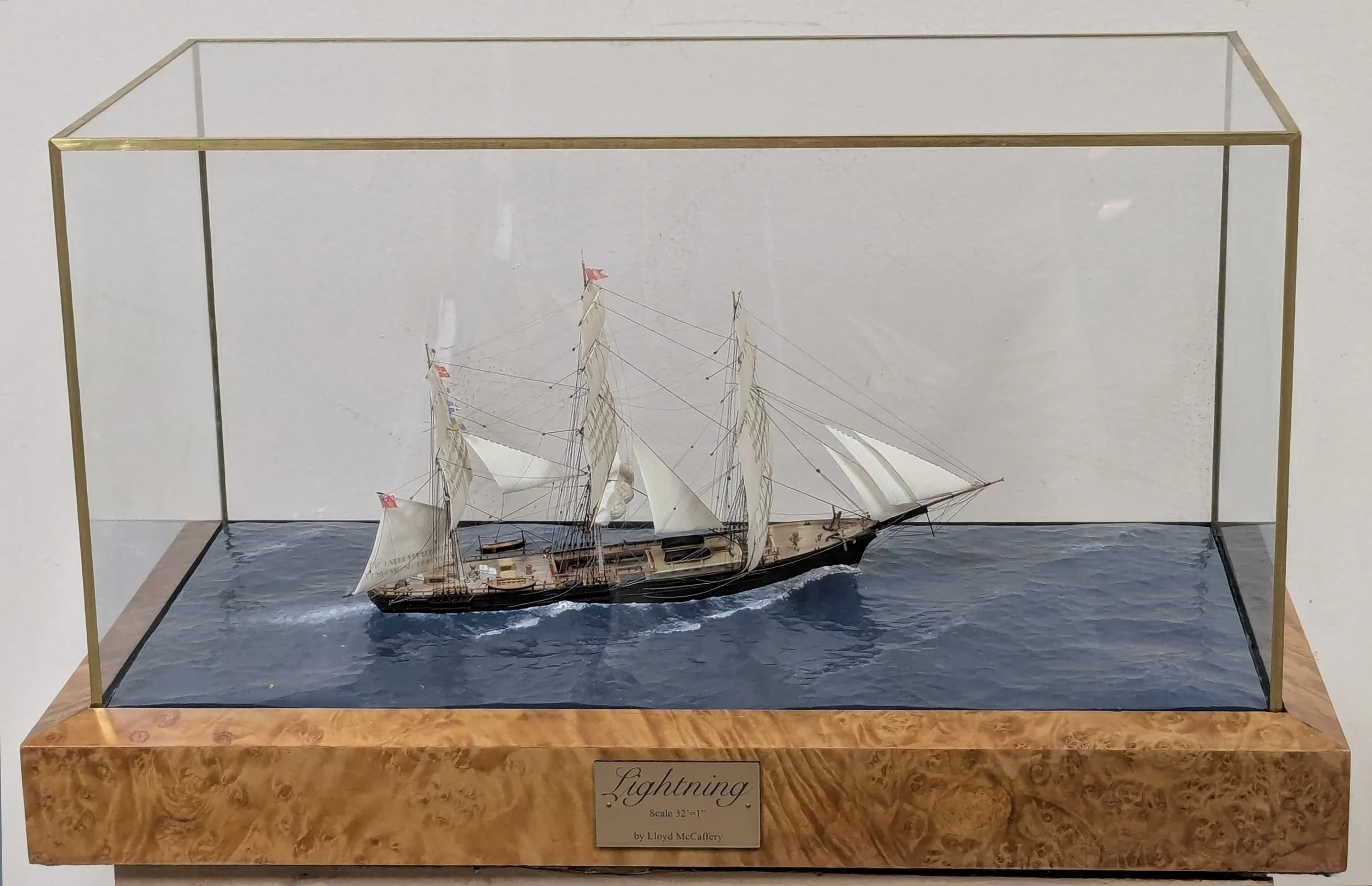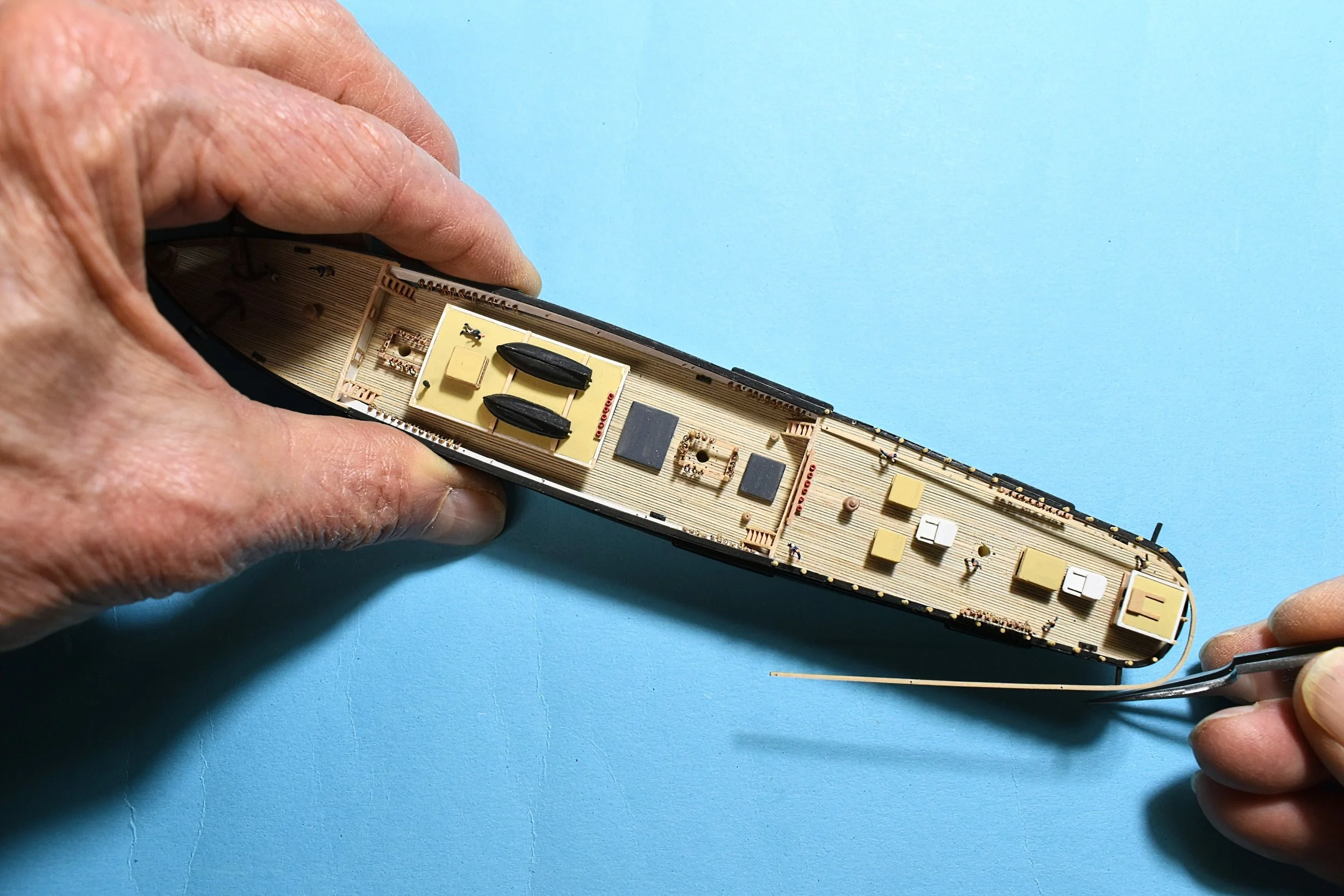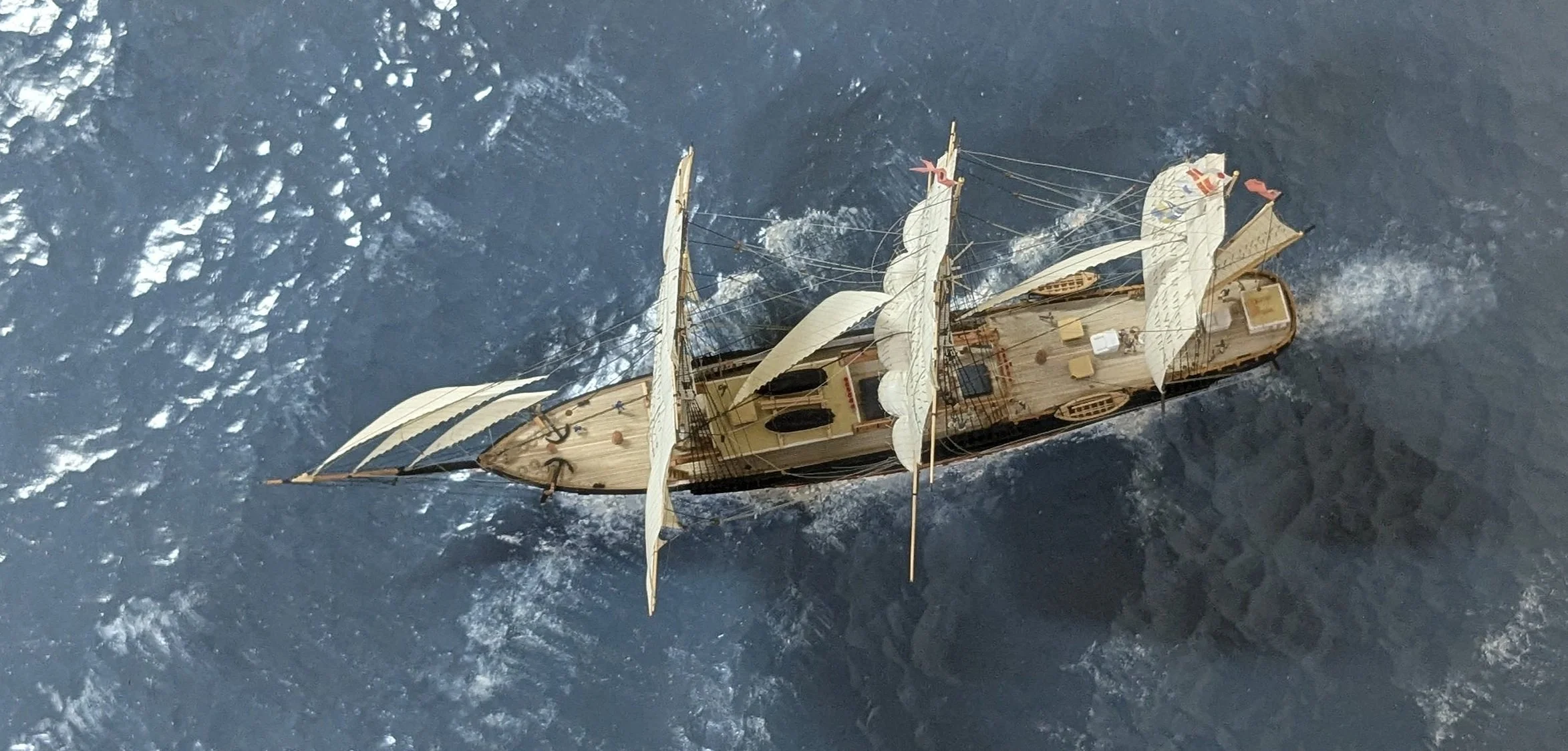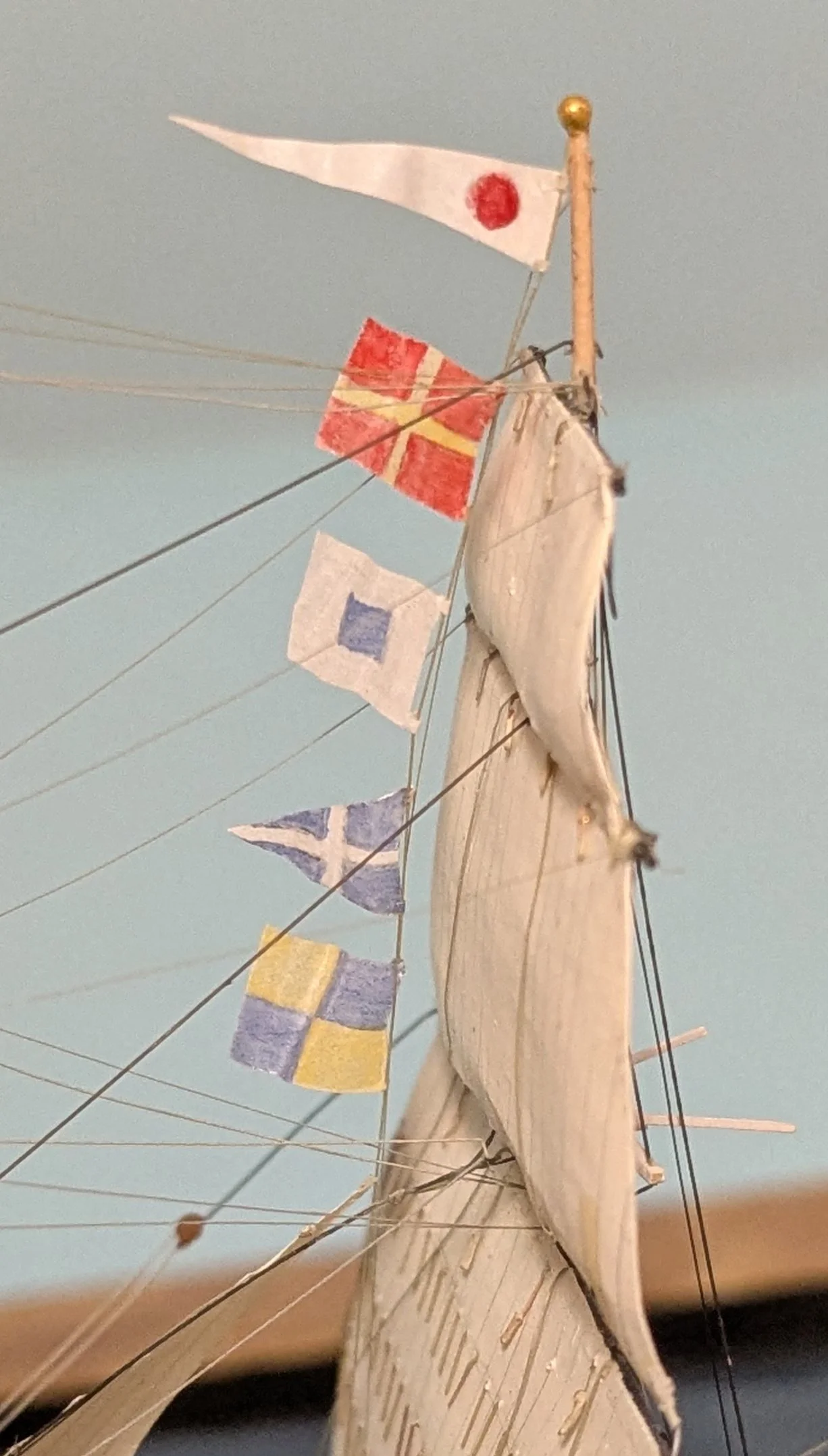American Clippership LIGHTNING, c. 1854
scratch built ship model, scale: 32’ = 1”
9 ½” LOA, encased dimensions: 18” long x 10 ¼” wide x 10” high
SOLD
LIGHTNING, America’s greatest Clippership designed and built in Boston, Massachusetts, in 1854 - one of the last really large clippers to be built in the United States. She was built by Donald McKay for James Baines of the Black Ball Line, Liverpool, for the Australia trade. McCaffery chose LIGHTNING because she is a beautiful example of a McKay clipper. She is famous for setting the record of sailing 436 miles, noon to noon sighting - which may be more or less than 24 hours, depending on whether she is making easting or westing. Lloyd conceived his display based on the paintings of Jack Spurling (1870-1933) and Thomas Somerscales (1842-1927). Their settings of ships with stunsails set are magnificent, but the sea is running too much for setting stuns’ls.
His model shows wind from the port quarter, the ship is on the port tack, the sea was carved to represent a Beaufort force two , almost three. “Small wavelets, crests glassy, no breaking waves". Force three would be “gentle breeze, large wavelets, crests beginning to break.”
The basis for this model comes from the lines in The Clark Collection, Hart Nautical, Massachusetts Institute of Technology. These were almost certainly drawn by McKay’s second wife, Mary. The draftsmanship on this plan is superb, with very fine, fair lines depicting all the body lines. Lloyd found a great deal of information in books on ships and clippers, including 'British and American Clippers' by David R. McGregor, 'Tea Clippers’ by George F. Campbell, and ‘Masting and Rigging the Clipper Ship and Ocean Carrier’ by Harold A. Underhill , which each contained a wealth of information. Howard I. Chapelle is more specific on American clippers in 'Search of Speed under Sail’. The description of this ship by the reporter Duncan McLean was most valuable, though must be read carefully to unravel the layout of her decks and houses. McCaffery also found a lithograph, almost certainly based on a lost Buttersworth painting, showing her from the starboard bow.
Construction: The hull is constructed from two pieces of holly wood (Ilix sp.), a fine-grained stable wood. Two pieces, divided at the centerline, were used. This guarantees the centerline is preserved no matter how much is carved away, and allows the decks to be carved with proper camber. The bulwarks were added later, using neutral pH Bristol board. The decks are laid with individual strips of 1/64” square lilac (Syringa vulgaris). This is the best wood Lloyd has found for fine detail items.
Fittings: The deck houses were built up of Bristol board and lilac . All fittings, such as capstans, skylights, anchors, boats, figurehead, and gangways are shown. The railing around the stern is mounted on turned stanchions, each turned on a lathe, and are 3/32” high, not including the tenons. The railing is pinned to these stanchions. The are five nameboards: two port and starboard at the bow, two on each quarter, and one on the stern. These are hand painted and gilded with 24k. gold leaf. The letters are 1/32” high.
Rigging: The masts and yards are made of Degama (Calicophylum candidisimum), with the upper spars of lilac. The lower masts are built up, showing fillets bound by iron hoops, all painted white. Stunsail booms and yards are of Degama, with boom irons of brass. All three masts are surmounted by spherical trucks, with the main mast having Harris’s LIGHTNING arrestors. All sails are properly formed and fitted using glassine, a neutral pH paper. with all buntlines, reef points, and gaskets. All rigging material is wire, using Nichrome for most of it. The ratlines are formed of copper wire. All are painted in appropriate colors for standing and running rigging.
The Sea: The entire above assemblage is set in a sea carved from bass wood (Tilia Americana). It is painted to show light wind conditions and the passage of the ship. This sea is fasted with two screws passing from under the base up into the wood. The Base of the model is of basswood veneered with acacia burl veneer. A brass nameplate completes the presentation.
The Crew: There are 17 crew figures placed, 12 on deck, with five ascending the windward shrouds to deal with the billowing main course. There is also a lucky shark fin fitted to the end of the jib boom. This is shown in the ‘Cutty Sark’ book by Longridge, and in the paintings of Jack Spurling.
The Flags: The British 'red duster’ merchant marine flag flies from the spanker gaff. LIGHTNING was sold to James Baines and registered in Britain. His house flag flies from the main masthead. She makes her number, 7149 under the first distinguishing pennant. This is from Marryat’s code.
All McCaffery models are delivered with a written description, in a custom-made plywood shipping crate with foam rubber lining.










